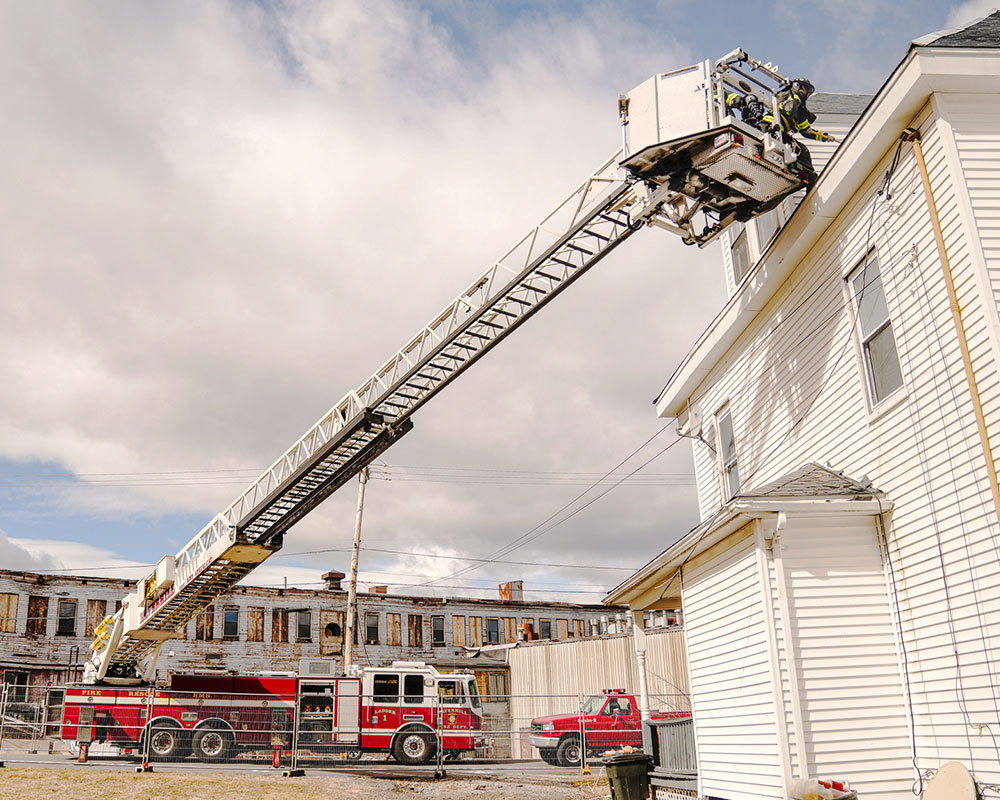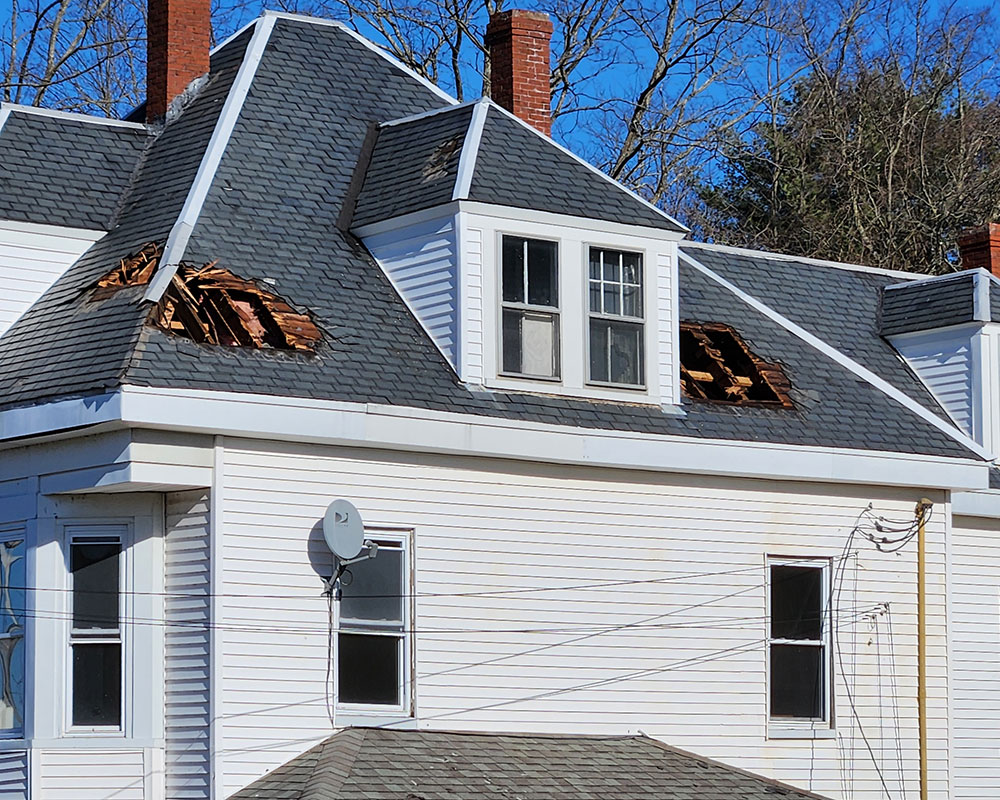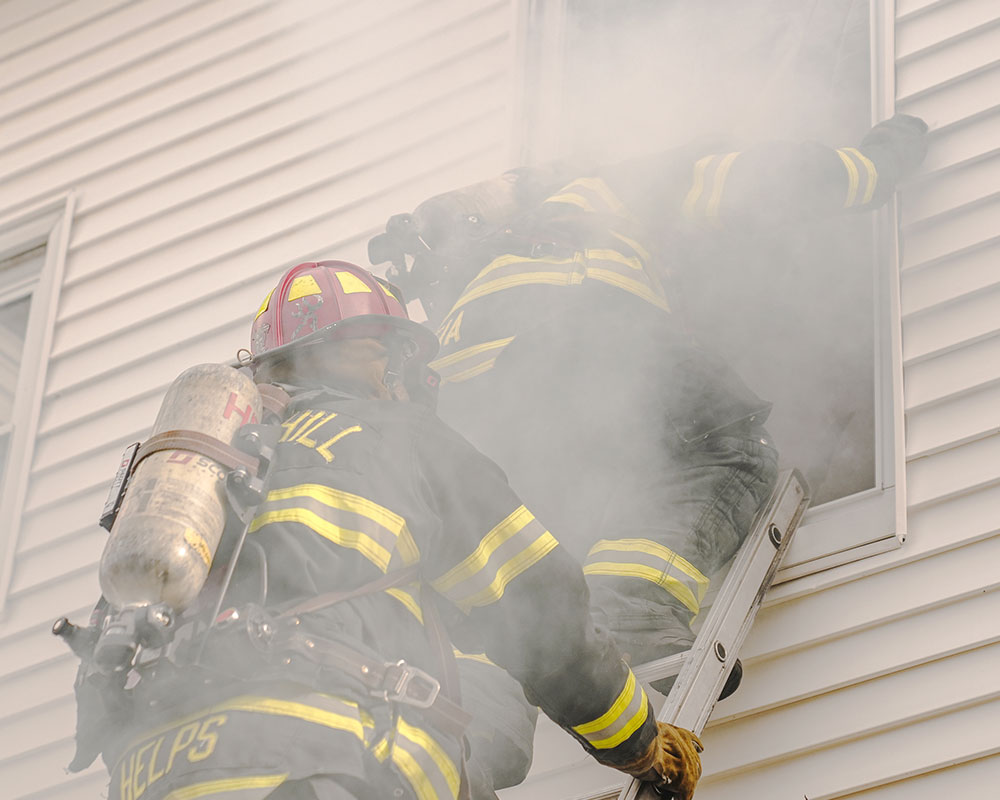(Additional photographs below.)
Haverhill firefighters have been getting some practical training this week at a vacant house that will become part of a Ward Hill “village” called “Oxford Crossing.”
Two houses across from the former Joseph’s Trattoria in Ward Hill have been fenced off in preparation for demolition, and even a portion of the street at Knipe Road is being purchased from the state. One of the abandoned homes features a slate roof—providing a necessary training feature not found in typical firefighting simulations. Haverhill Fire Chief Robert M. O’Brien told WHAV slate roofs are common in the city and can be very dangerous” because of falling pieces during a fire.
“They can really hurt you. They can kill people if you’re not paying attention. A slate roof also has to be shattered. It’s labor intensive to break the slate roof just to get to where the wood needs to be cut,” O’Brien said.
The houses and .33 acres of paved land at Route 125 are being consolidated into the Oxford Avenue development which will consist of a restaurant, retail space and 230 units of housing being built by Tuscan Village developer Joseph Faro and his sister Deanna Gaiero, owner of Joseph’s Trattoria restaurant.
State Department of Transportation spokesman John Goggin told WHAV the developer approached the Office of Real Estate and Economic Development about buying the land after the Haverhill City Council agreed during approval in November of 2022 to discontinue the street.
“MassDOT received one bid and is now under a due diligence license,” Goggin told WHAV by email.
Haverhill Economic Development and Planning Director William Pillsbury Jr. said there still will be access through the village to Cross Road.
While demolition of a factory building and attached restaurant is taking place, O’Brien said, all current firefighters and three recruits that are starting training are taking turns learning complicated techniques under simulated smoke-filled building conditions. The example of opening a hole in a slate roof, the chief said, is to vent smoke and heat, allowing firefighters to “operate more safely and with more visibility.”
Other training, overseen by Capt. Richard Shellene, includes carrying heavy, inflexible “charged”—or water-filled—hoses up to a second floor, and attempting to rescue a victim by accessing a second-floor window by ladder, knocking it out and testing the ability of a possibly compromised floor to hold people.
“The victim rescue. It’s a process of going over, getting a victim and bringing him to a window for removal,” O’Brien explained.
O’Brien said the training exercises are timely as the department gets ready to replace six or seven retiring firefighters and add 16 more thanks to a recent $4.1 million federal grant to hire 16 firefighters and permanently add a second ladder truck. The three recruits taking part in the exercises are bound for the Massachusetts Firefighting Academy, while another nine are enrolled now and two recently completed the Academy.

Haverhill firefighters use ladder truck to reach second floor of vacant Oxford Avenue home during training exercise. (Mike Jarvis photograph for WHAV News.)

Haverhill firefighters made holes in the slate roof of vacant Oxford Avenue house during unusual training opportunity. (WHAV News photograph.)

